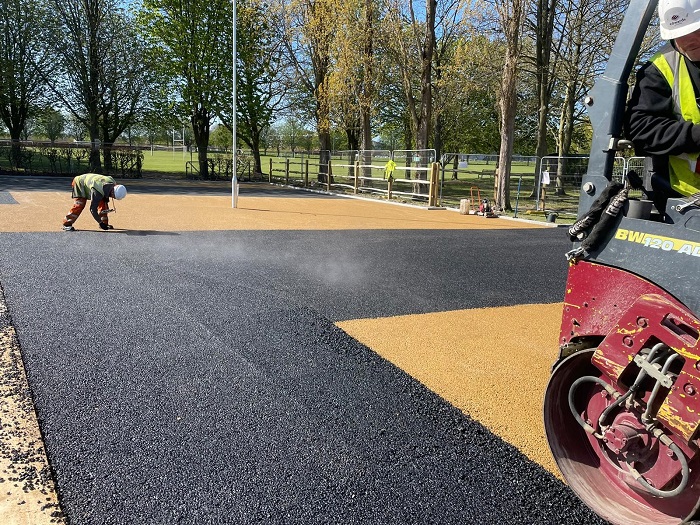Asphalt resurfacing is a complex task that should only be left to the professionals.
Tarmac resurfacing Gorleston On Sea is a vital process in maintaining and extending the life of paved surfaces. From busy highways to quiet residential driveways, this technique addresses wear and tear caused by daily use, harsh weather conditions, and the passage of time. By restoring functionality, improving safety, and enhancing visual appeal, tarmac resurfacing ensures that asphalt surfaces continue to meet the demands of modern infrastructure.
Asphalt, though durable, is not immune to deterioration. Over time, repeated exposure to traffic, UV rays, and temperature fluctuations leads to cracks, potholes, and general surface degradation. These issues, if left unaddressed, can escalate into more extensive damage that compromises the structural integrity of the pavement. Tarmac resurfacing is a cost-effective solution that prevents this progression by repairing the surface and fortifying it against future wear.
The tarmac resurfacing Dereham process begins with a thorough evaluation of the pavement. Professionals inspect for surface damage, assess drainage systems, and determine whether the underlying layers remain stable. This step is critical to ensure the resurfacing process addresses all issues comprehensively and delivers a durable, long-lasting result.
Once the evaluation is complete, the preparation phase begins. This includes cleaning the surface to remove debris and dirt, filling larger cracks, and leveling any uneven areas. In many cases, the damaged top layer of asphalt is removed through milling. This step ensures that the new tarmac adheres properly and provides a stable base for optimal performance.
The resurfacing itself involves applying a fresh layer of asphalt over the prepared surface. This new layer is carefully spread and compacted to achieve a smooth and even finish. Advanced machinery and skilled professionals ensure that the resurfaced pavement is durable, visually appealing, and capable of withstanding heavy use and environmental stressors.
One of the primary benefits of tarmac resurfacing is enhanced safety. Damaged pavements can pose significant risks to drivers, cyclists, and pedestrians. Cracks and potholes increase the likelihood of accidents, while uneven surfaces can cause vehicles to lose control or sustain damage. Resurfacing eliminates these hazards, providing a safer environment for all users.
In addition to safety, resurfacing significantly improves the appearance of paved areas. Over time, asphalt can fade and become patchy, detracting from the overall look of the space. A newly resurfaced tarmac restores the pavement’s rich black finish, creating a clean and professional appearance that boosts the aesthetics of both private and public spaces.
Economically, tarmac resurfacing is a practical choice for extending the life of asphalt surfaces. While the process requires an initial investment, it is far more affordable than full-scale reconstruction. Regular resurfacing prevents minor issues from escalating into major problems, reducing long-term maintenance costs and ensuring that the pavement remains functional for years to come.
Sustainability is another significant advantage of modern tarmac resurfacing. Many resurfacing projects incorporate recycled materials, such as reclaimed asphalt, reducing waste and conserving natural resources. Additionally, improvements in asphalt technology have led to longer-lasting surfaces, which further minimise the environmental impact of maintenance activities.
Tarmac resurfacing is versatile, suitable for various applications, and adaptable to different environments. On motorways, it ensures smooth travel for high volumes of vehicles, reducing fuel consumption and vehicle wear. In residential settings, it revitalises driveways and pathways, enhancing both functionality and curb appeal. For commercial properties, it creates safer and more organised car parks, improving the experience for customers and employees alike.
Weather resilience is another critical benefit of resurfacing. Properly maintained asphalt surfaces can withstand the effects of freeze-thaw cycles, heavy rainfall, and intense heat. By sealing cracks and reinforcing the pavement, resurfacing protects against water infiltration and temperature-related damage, preserving the integrity of the surface in even the harshest climates.
In conclusion, tarmac resurfacing is an indispensable practice for maintaining the quality and functionality of asphalt surfaces. It offers a proactive approach to addressing wear and tear, enhancing safety, improving aesthetics, and ensuring long-term cost savings. Whether it’s a major highway, a residential driveway, or a commercial car park, resurfacing provides a reliable solution that supports the needs of modern infrastructure while contributing to a more sustainable future.
